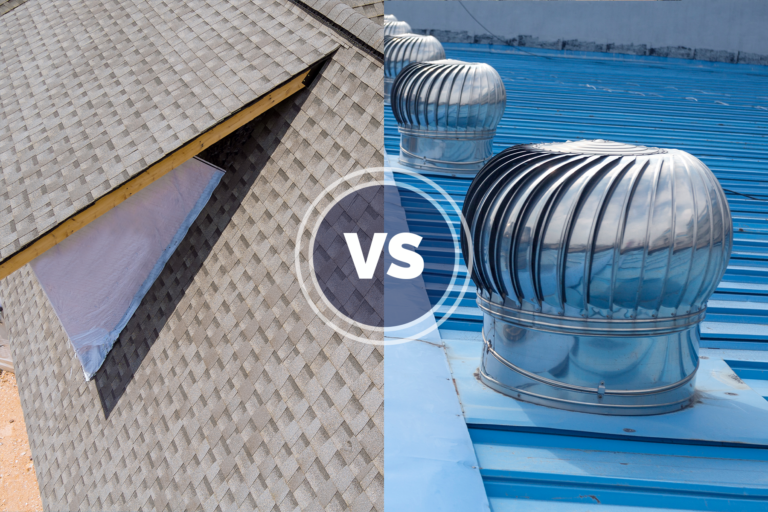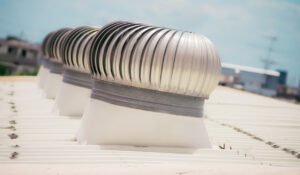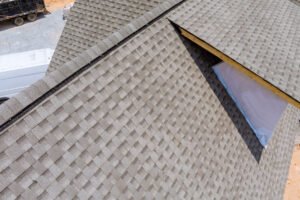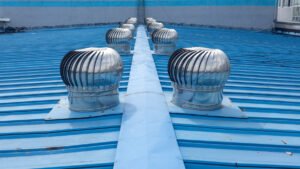Roof vents are the key to good attic insulation, ventilation, and durability. And when talking about roof vents, ridge vents and turbine vents are popular options for better ventilation. But which of the two will have more airflow and keep the attic warm and dry? Let us find out!
Today, we’ll analyze the features of ridge and turbine vents and compare them in all aspects. And we’ll finally compile them into a table for reference.
Key Takeaways
- Ridge vents and turbine vents vary according to the roof pitch and design. But there are other differences below that you must check out!
- Ridge vents are the best for pitched roofs, whereas you can mount turbine vents on flat roofs too! You can also check the preferred attic style below.
- Turbine vents work in dry, windy areas, but ridge vents also work in tropical regions.
- Turbine vents are bulky and heavy, whereas ridge vents are light and concealed. Let’s compare some other significant differences!
What Is a Ridge Vent?
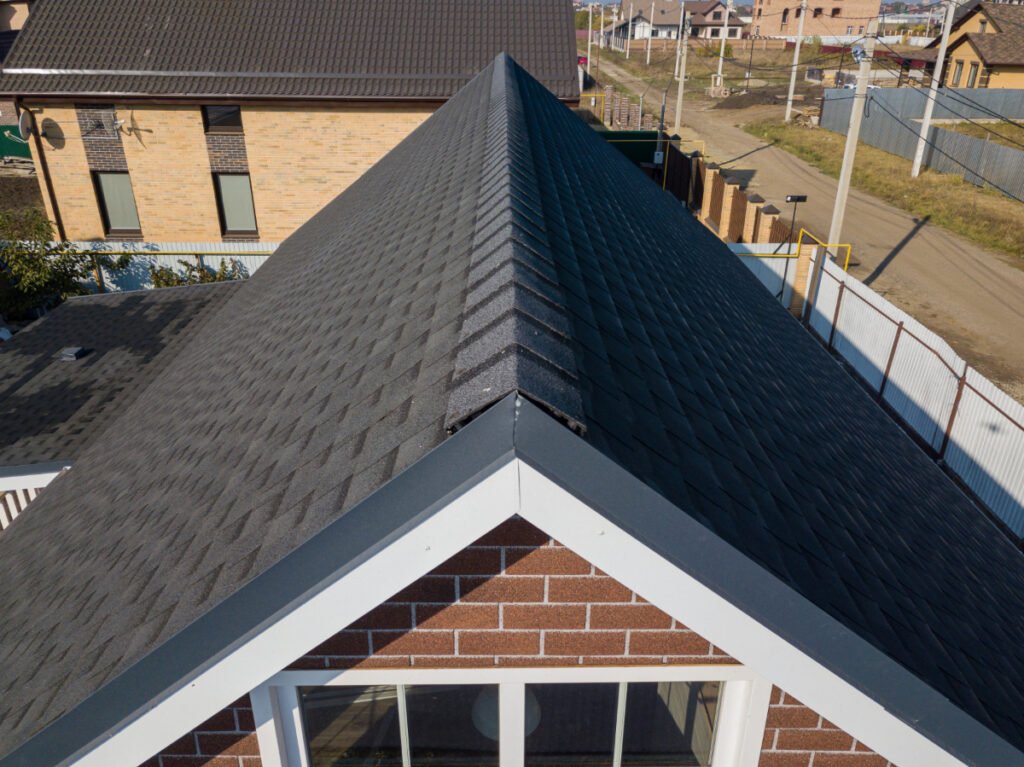
What Is It: A ridge vent is a slit-style air exhaust at the apex or the linear gaps of a multi-layer roof. It also has meshes or cap shingles to filter the air and save the attic from dust and debris.
How Does It Work: Ridge vents work on air pressure and push the light, diffused air out of their exhaust pipe. This creates a vacuum in the attic and forces cold air to enter and circulate within the system.
A ridge vent is a passive cooling slot vent at the apex of your roof. So, it isn’t as heavy as a roof turbine and doesn’t overload the shingles. And it looks modern and boosts the curb appeal.
Besides, ridge vents control moisture and temperature and do not rust easily. So, you can use them for different climates and roof designs. But don’t forget to add some wind baffles or weather guards for better protection in windy areas.
However, ridge vents move less air at a time and cannot ventilate larger attics as roof turbines do. And you must mount them along the entire roof line for proper exhaust, which might incur more installation charges.
| Average Cost | $ 1000 – 2000, depending on the roof length |
| Preferred Roof Style | Pitched, Gable, Hip and Shingle roofs |
| Preferred Attic Style | Larger Garage, Fully finished and Truss attics |
Cover the ridge vents with a vinyl or PVC capping material and paint them to match the roof style. But, can you paint the vents? Check this and more such questions here.
What Is a Turbine Vent?
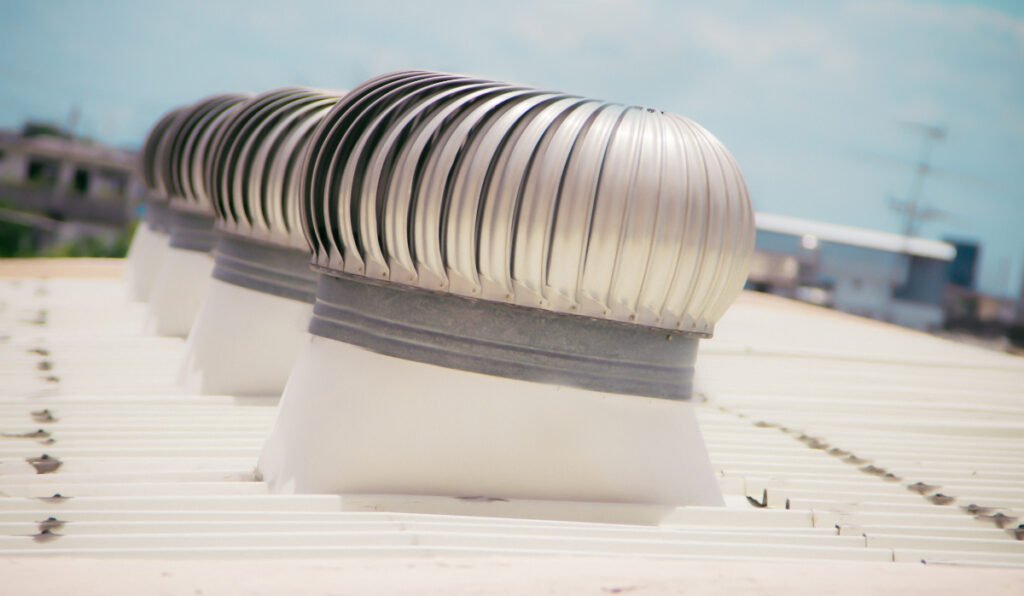
What Is It: Turbine vents are large, bulb-shaped fans with thick bases and small openings. They have rotating blades that spin with the wind and force the exhaust away from the attic.
How Does It Work: Turbine vents absorb all the hot air at the center of the vent. Later, they force the exhaust out of the central vent through convection currents. They rotate simultaneously and circulate fresh air from the rooftop into the attic below.
Turbine vents are wind-driven and hence, depend entirely on wind speed and direction to function and might not work in dry areas with low wind.
Moreover, turbine vents are very compact and easy to install than ridge vents. They have sturdy parts and use separate intake and exhaust pipes for more airflow. You can even add lead batteries to boost their performance along the coasts.
However, these vents have low moisture resistance and might dent with heavy rain. They are also prone to fungus and rust and might need extra lubrication for dryness. And since they are noisy, a vent cap or vapor barrier might be required.
| Average Cost | $ 2000 – 3000 per piece |
| Preferred Roof Style | Flat, Shed, Gable or Gambrel roof |
| Preferred Attic Style | Trussed, Garage or Scuttle attic |
Use caulk or roof flashing to seal the gaps and reduce moisture in a turbine vent.
Differences Between a Ridge Vent and a Turbine Vent
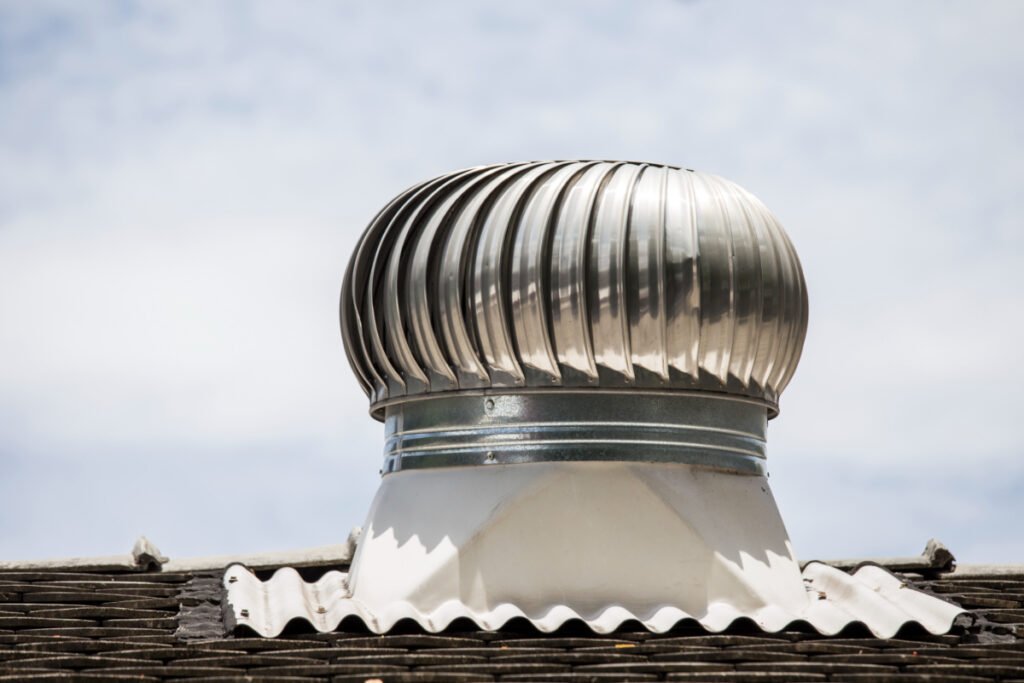
Ridge and Turbine vents ventilate the attic but differ in their design, costs, and functions. So, let’s compare them and pick the best one to solve your heat problem.
1. Structure
Ridge vents are simple and consist of a meshed slot below the roof’s apex line. But, they might even have wind covers or vapor barriers to match the roof style.
But turbine vents are more complex and consist of attic fans, blowers, and a bulbous head from the roof. They also have separate intake and exhaust pipes from the central blower to the roof seam.
2. Function
Ridge vents boost the airflow in the attic and insulate it from moisture, sound, and pests. They also control the temperature and humidity and ensure the utmost comfort.
On the other hand, turbine vents blow fresh air to the attic but have relatively lower insulation and temperature control. Instead, they increase the cross ventilation and reduce the air conditioning.
3. Location
Ridge vents are concealed between the apex lines and seams in multi-layered roofs. But turbine vents are mounted on the windward slopes or sides of any pitched or flat roof.
4. Air Capacity
Ridge vents have a lower air capacity of 200-300 m3 per hour without wind barrels and 350-400 m3 per hour with wind barrels.
In contrast, turbine vents are sturdier and heavy-duty and can move up to 1000-1200 m3 per hour in windy areas.
5. Ease of Installation
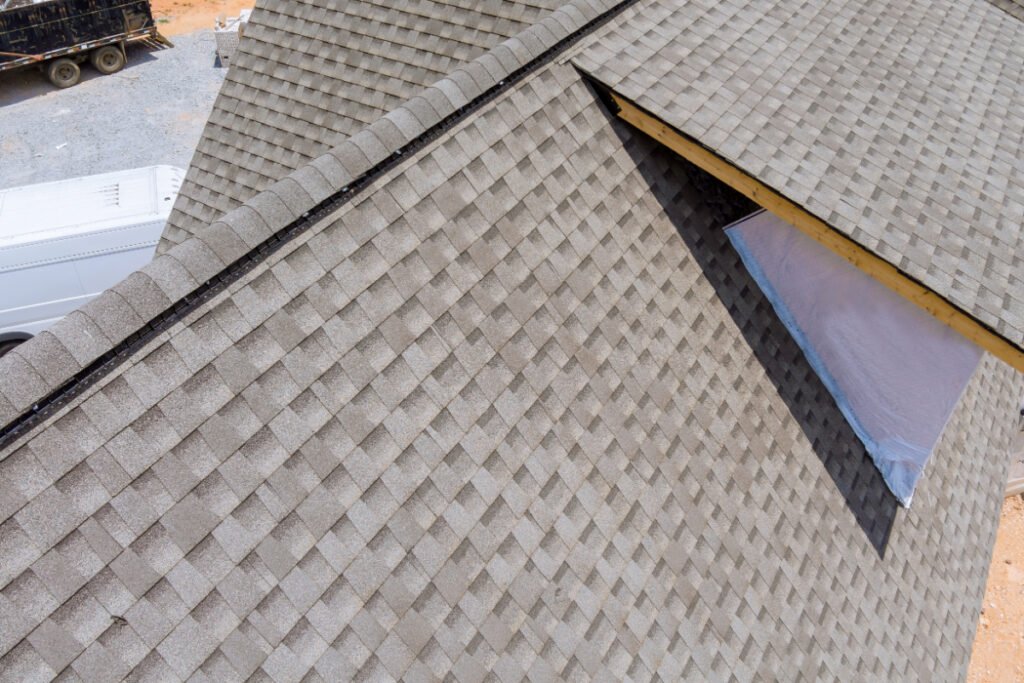
Turbine vents are very easy to install and have pre-assembled parts for direct screwing. But ridge vents are challenging, and you’ll need to remove the shingles and cut a hole along the roof line before installation.
Here are some more points to compare a ridge vent and a turbine vent:
| Parameters | Ridge Vent | Turbine Vent |
| Lifespan | 35 – 50 years | 15 – 20 years |
| Cost | $ 1000 – 2000 | $ 2000 – 3000 |
| Materials | Aluminum or Steel Mesh | 24-gauge Galvanized or Aluminum Steel |
| Standard Sizes | 2 – 3 inch wide and flexible length | 12, 14, 16, 20, 24 inches |
| Visibility | Concealed under the ridge line | Protrudes out of the roof line |
| Wind Resistance | Moderate | High |
| Pest Resistance | High | Low |
| Moisture Resistance | High | Low |
| Function | Passive Air Flow | Better Attic Ventilation |
| Climate | Tropical, Temperate, Dry, and Windy | Dry and Windy |
| Vent Type | Static, Passive | Active |
Which Vent Is the Best During Winters and Snow?
A higher-capacity turbine vent is the best during winter. It effectively handles more air volume, circulates it, and keeps the attic dry. Thus, you won’t have to worry about soggy roof trusses or snow leakages along the roof line.
On the other hand, ridge vents may freeze in winter and trap moisture and cold inside.
Use a good-quality heater, or add some styrofoam insulation under the vent for better heat control.
What Type of Vent Is the Best for Pest Control?
Ridge vents are better for pests and create a curtain that blocks birds, rodents, and squirrels from entering the attic. And its meshed surface further filters the air and keeps insects away.
On the other hand, though turbine vents have large, noisy fans that scare most birds, they have central openings that might attract rats.
Add a vapor barrier, mosquito net, or roof cap over the turbine vent to filter the air and keep the pests away.
Which Vent Requires More Maintenance?
Turbine vents need maintenance to protect their steel parts from rusting and discoloration. And they even need oiling to reduce the friction between their blades and boost performance.
But ridge vents have lesser maintenance and will be as good as new ones once cleaned and dusted.
Use a high-pressure air jet or hose to remove the debris from a ridge vent’s body and restore airflow.
Which Type of Vent Is the Best for Temperature Control?
A ridge vent is the best for temperature control and will have smaller air cycles that retain heat without heavy insulation. But, a turbine vent changes a lot of air and loses heat efficiency in windy areas.
Can You Use a Ridge Vent and Turbine Vent Together?
You can combine ridge vents and turbine vents for better attic ventilation, but you must place them far apart for better airflow. Moreover, you’ll need to install bigger intake vents to match the double exhaust speed and add insulation to retain heat.
Tips for Picking the Best Attic Venting

- You can mount turbine vents on flat roofs or sloping roofs, but limit ridge vents to pitched or multi-layered roofs.
- Use ridge vents for optimal temperature control, but pick turbine vents for better attic ventilation.
- Use ridge vents with low-span roof trusses or shingles while picking turbine vents for larger areas, spans and tile-roofs.
- Choose ridge vents for modern and industrial decor. But, select turbine vents for a traditional or classical look.
- Go with turbine vents in windy or dry areas and pick ridge vents for wet regions.
Can Rain Seep in Through a Turbine Vent?
Turbine vents usually blow away soft to average rain with their rotating blades. However, rain might seep if the blades stop rotating or bend due to pressure.
How Many Vents Do I Need for My Attic?
On average, you’ll need one roof vent for every 300 sq m of attic space. But, roof venting varies according to the attic design and volume and needs some calculations to finalize the design. So, check our article on ‘roof vent numbers’ to know it all!
Can I Use an Attic Fan with a Ridge Vent?
No, you mustn’t use an attic fan with the ridge vent as it may reverse the natural exhaust and pull rainwater inside. Instead, use these with static air vents or blowers to increase ventilation.
Both ridge vents and turbine vents have excellent air circulation and exhaust capacities. But, ridge vents offer more moisture protection, whereas turbine vents have higher airflow. And ridge vents are quiet and pest-free, whereas turbine vents are stronger and flexible.
So now that you can pick a vent based on the table and questions above, it’s time to dive further and analyze some more types of roof ventilation. Check this list of types of roof vents for more!

